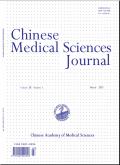Construction of a Research Public Platform Based on Hierarchical Management and Precise Services: Experience of West China Hospital
Q2 Medicine
引用次数: 0
Abstract
With the development of education and technology, the construction of research public platforms has emerged as a critical initiative for many universities and top-tier public hospitals. The core and most fundamental function of a basic public platform is to aggregate large instruments and specific resources, providing open services for instrumental analysis and sample testing. Optimized management and high-quality, efficient services are essential for such platforms. This article elucidates the construction of a research public platform in West China Hospital, focusing on the adoption of hierarchical management and precise services. The core of the hierarchical management lies in building a multi-level service platform composed of routine support platforms, advanced technology platforms, and specially qualification platforms, while establishing a talent hierarchy that differentiates between core and routine positions. This structure is designed to accurately meet the diverse needs of users and enhance resource efficiency. By implementing user access control with differentiated permissions for internal and external users and a dynamic credit-based review system, the laboratory can ensure safe and efficient operations. The four service modes—instrument usage, in-lab experiments, sample testing, and collaborative projects—are precisely aligned with various research scenarios. Proactive engagement with grant-funded projects, customized services for research groups, and a multidimensional training system further strengthen the platform's support for major scientific research tasks. Through systematic management and service innovation, this model achieves efficient integration and sustainable development of platform resources, providing a valuable reference for the construction of public platforms in similar medical institutions.
分级管理、精准服务的科研公共平台建设——华西医院的经验
随着教育和科技的发展,建设科研公共平台已成为许多高校和一流公立医院的重要举措。基础公共平台最核心和最根本的功能是集合大型仪器和特定资源,为仪器分析和样品检测提供开放服务。优化的管理和优质高效的服务是这些平台必不可少的。本文阐述了华西医院科研公共平台的建设,重点是采用分级管理和精准服务。分级管理的核心在于构建由常规支撑平台、先进技术平台和专项资质平台组成的多层次服务平台,同时建立区分核心岗位和常规岗位的人才层级。这种结构旨在准确满足用户的多样化需求,提高资源效率。通过对内外部用户实行差异化权限的用户访问控制和基于信用的动态审核制度,确保实验室安全高效运行。四种服务模式——仪器使用、实验室实验、样品测试和合作项目——精确地与各种研究场景相一致。积极参与科研资助项目,为科研小组提供个性化服务,建立多维度培训体系,进一步加强了平台对重大科研任务的支持。该模式通过系统化管理和服务创新,实现了平台资源的高效整合和可持续发展,为同类医疗机构公共平台建设提供了有价值的借鉴。
本文章由计算机程序翻译,如有差异,请以英文原文为准。
求助全文
约1分钟内获得全文
求助全文

 求助内容:
求助内容: 应助结果提醒方式:
应助结果提醒方式:


